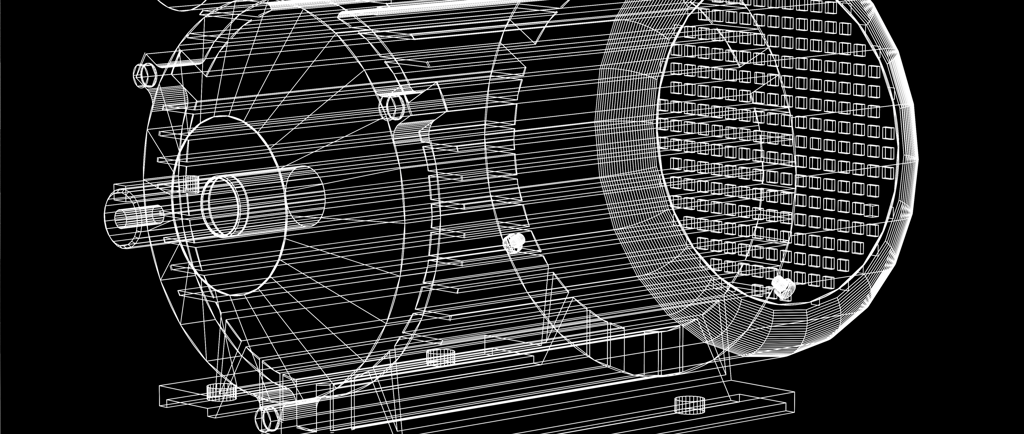Variable Speed Motors: Installation, Testing, and Troubleshooting
Discover how variable speed motors enhance HVAC efficiency. Learn key installation steps, best practices for testing, and advanced troubleshooting tips to ensure long-term reliability.
3/26/20258 min read


What This Post Covers
The role of variable speed motors in modern HVAC systems
Key advantages for energy efficiency, comfort, and performance
Practical guidance on selecting and installing variable speed drives
Testing methods to confirm correct airflow, speed settings, and electrical integrity
Troubleshooting common motor or drive issues
Maintenance practices for extended service life
Support from SuperTech Industries for complex retrofits or repairs
Why Variable Speed Matters
HVAC technology has evolved far beyond single-speed blower motors. Many furnaces, air handlers, and heat pumps now use variable speed motors, allowing the blower or compressor to adjust output continuously based on demand. Instead of one or two fixed speeds, a variable speed motor uses electronic controls (like an ECM—electronically commutated motor—or an inverter drive) to fine-tune airflow or refrigerant compression in real time. This adaptability delivers multiple benefits:
Improved Comfort: Gradual ramp-ups reduce temperature swings, preventing blasts of cold or hot air when the system cycles on. Continuous lower-speed operation can provide more consistent humidity control.
Energy Efficiency: A motor running at partial capacity often consumes far less electricity than a single-speed motor turning on/off repeatedly at full power. Over a season, variable speed drives can yield substantial energy savings.
Quiet Operation: Slower speeds generate less noise and vibration. Homeowners appreciate the discreet hum rather than the noticeable roar of a standard blower.
Reduced Wear and Tear: Gentle ramping places less mechanical stress on belts, fans, and other components, extending equipment life.
Though variable speed motors excel in comfort and efficiency, they also introduce new layers of complexity. Installation demands extra wiring or control modules, and diagnosing anomalies may involve analyzing step signals or drive fault codes. For skilled HVAC professionals, these advanced motors open up new ways to refine system performance, but require vigilance to ensure correct application, calibration, and troubleshooting.
Selecting the Right Motor or Drive
Before rushing into a motor swap, it’s vital to confirm that the proposed variable speed solution is appropriate for the existing HVAC equipment. Not all furnaces or air handlers are designed to accept an ECM or inverter drive, so identify if the manufacturer offers a compatible motor upgrade kit or if the entire system needs a matching control board. Consider:
OEM vs. Aftermarket: Some original equipment manufacturers produce integrated variable speed blowers for their furnaces, ensuring a seamless fit and guaranteed performance. Aftermarket or universal ECM replacements exist but may require custom wiring or updated control modules.
Static Pressure Constraints: If the duct system is undersized or significantly restricted, a variable speed blower might mask poor airflow by ramping speeds higher, eventually drawing excessive amps or producing undesired noise. Confirm duct sizing or address restrictions first.
Horsepower and Voltage Ratings: Ensure the new motor matches or exceeds the original horsepower specs. Double-check power supply demands, especially if migrating from single-phase to a drive-based motor requiring stable line voltage or additional wiring.
Control Signals: Standard PSC (permanent split capacitor) motors use simple line voltage circuits, while variable speed motors may need low-voltage, DC, or data signals from a specialized board. If the existing control board is incompatible, a separate “communicating” board or integrated drive may be necessary.
Conducting these checks ahead of time helps avoid expensive returns or the frustration of discovering in the middle of an installation that certain harness connections are missing.
Installation Steps for a Smooth Setup
When the motor and drive system are finalized, correct installation becomes crucial. Proper physical mounting, alignment, and electrical hookups all play roles in achieving quiet, efficient operation.
Begin with Safety
Cut power at the circuit breaker/fuse box, lock out or tag out if possible. High voltage lines or capacitors can create shock hazards. Wear protective gloves and safety glasses if you’re removing panels or handling sharp-edged blower housings.
Remove the Old Motor
Access the air handler or furnace blower assembly, typically by sliding out a blower cage or removing a panel. Disconnect wiring carefully, labeling any color-coded lines if needed. Loosen the set screw on the blower wheel hub, gently unbolt or unclip the old motor from its brackets, and lift it free.
Inspect the Blower Wheel and Housing
If you see dust buildup or minor rust, clean or lightly sand these areas. A dirty wheel can imbalance and hamper the new variable speed motor’s efficiency. Check balancing weights or any signs of cracks in the wheel’s spokes.
Mount the New Motor
Confirm the new motor’s bracket orientation matches the blower housing. Some motors allow rotation or different bolt patterns. Secure hardware firmly but avoid overtightening. Align the shaft with the blower wheel hub, leaving a small gap so the wheel doesn’t rub the motor housing or cage edges.
Wiring the Motor and Drive
A variable speed motor might come with a separate “drive module” or an integrated drive attached to the motor’s end. Different brand designs require unique steps:
Line Voltage (L1, L2): Supply wires carrying standard 120V or 240V (in some regions 208/230V) to power the motor.
Ground/Earth: Must be connected properly; never skip grounding.
Signal Connections: Typically multiple harness pins or low-voltage lines that feed control signals. Some boards read temperature or pressure inputs and translate them into speed commands. Others follow simple DIP switch settings for speeds.
Programming or DIP Switches: Check instructions for blower speed profiles, static pressure compensation, or “comfort ramp” settings that define how quickly the motor accelerates.
Secure Cables and Check Clearance
Route wires safely away from rotating fan blades or hot surfaces (e.g., the furnace heat exchanger). Use cable ties and protective grommets if passing through metal partitions. A single snagged wire can cause catastrophic short circuits or motor damage.
Testing and Commissioning
Once the new motor is physically in place and wired up, methodical testing ensures everything runs as intended.
Initial Power-On
Restore power, set the thermostat to a call for cooling or heating, and observe how the motor ramps up. Check for:
Smooth Acceleration: Jerky starts might indicate incorrectly wired coils or a mismatch in control signals.
Absence of Unusual Noises or Vibration: If you notice scraping or rattling, cut power again and recheck blower wheel alignment.
Amperage Readings: Use a clamp meter to verify the motor’s current draw stays within nameplate specs (especially at high speed). If too high, suspect duct restrictions or incorrect programming.
Airflow Confirmation
Variable speed motors often adapt to static pressure changes. If the system is extremely restrictive, the motor might speed up to maintain CFM, resulting in more noise or higher amps. Consider measuring:
External Static Pressure (ESP): Insert manometer probes on supply and return sides. If the total ESP surpasses recommended limits, the motor might be overtaxed.
Flow Hood or Duct Traverse: If airflow is crucial (like in a carefully designed system), measure delivered CFM to confirm it meets design specs.
Check Heating/Cooling Transitions
Many variable speed blowers have different profiles for heating vs. cooling. In heating, the blower might gradually ramp up after burners ignite, while in cooling, it might run a different ramp to optimize dehumidification. Observing these transitions helps confirm the system logic is correct.
Fine-Tuning
Some advanced boards let you adjust ramp profiles or speed taps via DIP switches or software. If customers complain about insufficient airflow in cool mode or too forceful airflow in heat mode, consider tweaking these parameters. A small change (like a 5% reduction in top speed) might reduce noise while maintaining adequate comfort.
Common Issues and How to Solve Them
Motor Fails to Start
Possibilities include:
Power Supply or Circuit Breaker: Double-check line voltage. A partially tripped breaker or loose neutral kills the drive.
Control Wiring: Low-voltage miswires can prevent the drive from receiving a run command. Confirm each harness pin aligns with the correct board output.
Drive Overload Fault: If static pressure is extremely high or the blower wheel is obstructed, the motor might stall. Freed up blockages or adjust ducting as needed.
Motor Overheats or Trips
If you notice scorching odor or repeated trip conditions:
Check Amp Draw: If the motor runs near or above rated amps, it’s working beyond design. You may need to reduce blower speeds, fix airflow restrictions, or confirm the motor’s horsepower rating is adequate for the application.
Verify Cooling: Some ECMs rely on airflow across the motor shell for cooling. If it’s a sealed cabinet design, ensure no additional insulation is choking the motor’s heat dissipation.
Excessive Noise or Vibration
Variable speed doesn’t automatically ensure silence if:
Blower Wheel Imbalance: Bent blades cause rattle or hum. Rebalance or replace a damaged wheel.
Loose Mounting: Motor brackets or set screws might be under-torqued.
Overcompensation: The motor tries to maintain airflow under severely restrictive duct conditions, spinning at high RPMs with audible whine. Reducing the maximum speed setting or improving duct capacity might help.
Error Codes or Drive Alarms
Some motor drives or integrated boards show LED flashes or numeric codes for conditions like:
Stepper Coil Fault
Communication Timeout
High/Low Voltage
Overtemp
Consult the specific brand’s manual. The solution might be as simple as updating firmware or re-seating a connector, or as involved as replacing a drive module with burned components.
Maintenance and Long-Term Care
Though modern ECM or inverter-based motors are quite robust, a few practices ensure longevity:
Keep the System Clean
Dust or debris can hamper motor cooling and hamper the drive’s electronics. Regularly change air filters and vacuum blower compartments.
Monitor Static Pressure
Because variable speed motors can compensate for duct restrictions, you might not notice inefficiencies until the motor shows higher amp draw or the system runs noisily. Check static pressure annually or whenever you suspect a new restriction (like a clogged evaporator coil).
Inspect Wiring Connections
During routine maintenance, confirm harnesses remain secure. Vibration or heat cycles can loosen terminals. A quick visual check saves bigger issues later.
Firmware Updates
Occasionally, manufacturers release improved control logic or bug fixes for the motor drive’s microcontroller. If you suspect erratic operation, see if an authorized technician can flash updated firmware to refine speed control or reduce hunting.
Replace Worn Components Early
Blower wheels, belts, or bearings might degrade faster in systems with frequent speed changes. If you notice a slight imbalance or a worn belt, address it promptly to prevent motor strain.
Real-World Example: Upgrading a PSC Blower to ECM
Imagine a homeowner complains of high electric bills and inconsistent airflow in multiple rooms. The existing single-speed PSC (Permanent Split Capacitor) blower cycles on at full speed, blasting cold air initially, then quickly shutting off. A technician evaluates static pressures, determines the duct system is reasonably sized, and recommends a variable speed ECM upgrade kit offered by the furnace manufacturer.
Installation Highlights:
The old motor is removed, the new ECM motor and control module slide into the same blower housing.
DIP switches on the control board are set to match a 3-ton AC coil, with a moderate ramp profile.
The tech remeasures airflow: the system quietly ramps up on start and meets the target CFM in cooling mode. The homeowner immediately notices quieter operation and more comfortable humidity levels.
The next electric bill shows a slight reduction, and further comfort improvements become evident—especially during mild days when the motor rarely needs to run at high speed.
This scenario illustrates how a properly executed variable speed retrofit addresses occupant complaints, adds efficiency, and extends the system’s lifespan.
When to Call a Professional
Though many pros find variable speed motors straightforward once they grasp the fundamentals, some advanced or brand-specific situations still require specialized assistance:
VRF or Multi-Zone Systems: Coordinating multiple inverter-driven compressors, EEVs, and ECM blowers can exceed standard HVAC skill sets.
Complex Communication Protocols: Some motors or boards rely on proprietary data lines. Diagnosing handshake errors or code mismatches might need brand-specific tools.
Consistent Overload or Burnouts: If you’ve replaced a motor multiple times yet keep seeing high-amp failures, deeper duct design or system config audits become necessary.
SuperTech Industries can handle from small single-furnace upgrades to multi-zoned, variable speed redesigns, ensuring each step is code-compliant and performance-driven. Our motto, “Simple Solutions. Superior Results.”, means we approach each project methodically, verifying the entire system synergy—so you get the smooth, efficient performance variable speed motors promise.
Conclusion
Variable speed motors represent a major leap in HVAC technology, offering enhanced comfort, quieter operation, and lower energy consumption. Installing or retrofitting these motors, however, entails more than swapping wires; it requires careful planning, correct sizing, and thorough commissioning. From verifying line voltages to customizing blower ramps, each detail shapes the final outcome. And when issues arise—like overcurrent faults or odd rumbling at certain speeds—knowing how to interpret drive signals, test motor coils, or reduce duct static sets advanced techs apart.
For homeowners, a successful variable speed upgrade elevates daily comfort while potentially slashing utility bills. For HVAC professionals, mastering installation and troubleshooting fosters a reputation for delivering cutting-edge solutions that outshine older single-speed designs. Whenever complexities overwhelm or brand-specific knowledge is needed, “Don’t just call a tech, call a supertech.” At SuperTech Industries, we blend mechanical expertise with electronic drive know-how, ensuring top-tier support for any variable speed motor project—no guesswork, no compromise.
SuperTech Industries
Your trusted partner for all your solutions.
KNOWLEDGEABLE - AFFORDABLE - ADAPTABLE - DEPENDABLE
© 2024. All rights reserved.
1530 E Williams Field Road
Ste. 201
Gilbert, AZ 85295


